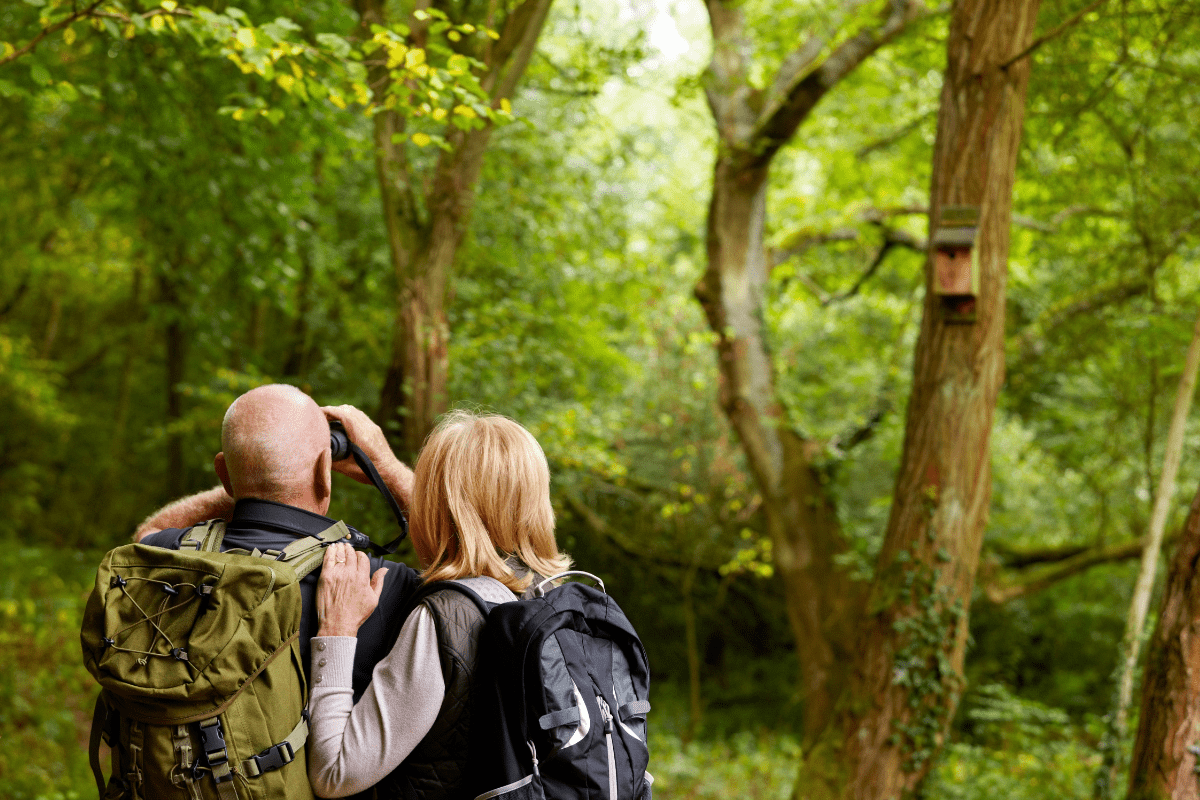If you've ever wanted to watch 100,000 bats pour out of a cave like some kind of nature documentary, Tennessee has you covered. This surprisingly biodiverse state packs more freshwater fish species than anywhere else in America, plus enough salamanders to make a herpetologist weep with joy.
Why Tennessee punches above its weight in wildlife
Let me drop some numbers that'll make you reconsider your next vacation destination. Tennessee harbors 325 freshwater fish species, which beats every other state including those show-offs in Florida and California. We're talking about 340 bird species flitting around, plus the world's most diverse salamander population concentrated in the Great Smoky Mountains.
The Smokies alone protect 31 salamander species, including 24 lungless varieties that literally exist nowhere else on Earth. These little guys breathe through their skin, which is both fascinating and slightly disturbing when you think about it too long.
What makes Tennessee special isn't just the numbers though. The state stretches from the Mississippi River bottoms to Appalachian peaks over 6,000 feet high, creating this incredible variety of habitats. You can spot alligator gar in west Tennessee waters, then drive east to photograph black bears in mountain meadows, all in the same state. It's like having a condensed version of America's wildlife in one convenient package.
When to actually see animals (not just trees)
Here's the thing about wildlife viewing that Instagram doesn't tell you: timing matters more than your fancy camera lens.
The daily wildlife schedule nobody mentions
Animals run on a schedule tighter than a German train system. Your best bet for spotting mammals like deer, bears, and elk? Set that alarm for stupid o'clock and get out there between 5:30 and 7:00 AM during summer months. I know, I know, vacation is supposed to mean sleeping in. But trust me, watching a black bear amble across a misty meadow beats any hotel breakfast buffet.
The hour before sunset offers your second-best window, especially for bears who start thinking about their evening snack runs. By 9:30 AM, most critters have retreated to shade because Tennessee summers are roughly as pleasant as standing inside a clothes dryer. The exception? Overcast days and light rain, when animals stay active longer because they're not roasting in the sun.
Seasonal wildlife calendars that actually work
Winter transforms Tennessee into bald eagle central. Reelfoot Lake hosts thousands of eagles during January and February, when they apparently hold their annual convention here. The same months bring around 12,000 sandhill cranes to Hiwassee Refuge, creating the Southeast's largest crane party outside Florida.
Spring migration from mid-April through mid-May turns the state into a warbler highway. Over 30 species pass through spots like Sharps Ridge in Knoxville, where local birders get so excited they practically vibrate at frequencies visible to the naked eye.
Fall delivers its own spectacle when elk enter mating season. From late September through October, bull elk bugle across mountain valleys in what sounds like a rusty gate mixed with a broken trumpet. It's hauntingly beautiful and slightly ridiculous at the same time.
Monthly highlights that help you plan:
- March: Nesting herons arrive
- April: Peak warbler migration
- July: Bat emergence spectacles
- September: Concentrated deer activity
- December: Maximum waterfowl variety
Where the wild things really are
Let's talk specific spots where you're actually likely to see something besides other tourists with binoculars.
Great Smoky Mountains National Park: The heavy hitter
The Smokies protect roughly 1,900 black bears at densities reaching two per square mile. Those are Vegas-level odds for wildlife viewing. Cataloochee Valley stands out for reliable elk viewing, where a reintroduced herd of 150-200 animals graze in historic meadows like they own the place (which, honestly, they kind of do).
Cades Cove's 11-mile loop road might move at the speed of molasses on weekends, but that's actually perfect for spotting wildlife. Early morning and evening drives yield the best results, when bears lumber across fields and deer pose like they're auditioning for a calendar shoot.
The park's "Salamander Capital of the World" title isn't just marketing fluff. With 31 species hiding under logs and in streams, including those 24 lungless varieties I mentioned earlier, it's basically salamander Disneyland. Just remember to look but don't touch, these little guys absorb everything through their skin.
Reelfoot Lake State Park: Eagle headquarters
This National Natural Landmark exists because earthquakes in 1811-1812 made the Mississippi River literally flow backward, creating this flooded cypress forest. Nature's chaos became wildlife paradise, especially for eagles.
During peak winter months, thousands of bald eagles converge here like retirees heading to Florida. The park hosts over 270 bird species total, including golden eagles, ospreys, and autumn pelican migrations that'll make you question everything you thought you knew about pelican geography.
The boardwalks and trails, including the 45-minute Airpark Trail, provide accessible viewing without requiring mountain goat fitness levels. It's one of the few places where you can see eagles without hiking boots or a geology degree.
Hidden gems worth the GPS confusion
Nickajack Cave Wildlife Refuge stages one of nature's most underrated shows when over 100,000 gray bats emerge in a continuous stream lasting 45 minutes each summer evening. It's like watching a river of wings pour into the sky, minus the vampire movie soundtrack.
Colditz Cove State Natural Area harbors rare species like the black mountain dusky salamander in ancient rock shelters. This place feels like stepping into prehistoric Tennessee, minus the dangerous parts.
Laurel Hill Wildlife Management Area sprawls across 14,952 acres of pristine habitat where you might actually achieve that elusive "didn't see another human all day" experience.
Gear that actually matters (and stuff that doesn't)
Let's cut through the equipment snobbery and talk about what you really need versus what outdoor magazines want to sell you.
Binoculars: Your most important investment
Skip the bargain bin specials that'll give you a headache faster than gas station wine. You want 8×42 or 10×42 binoculars for Tennessee's mixed terrain. The wider field of view helps track animals moving through forest canopies, which they do approximately 100% of the time when you're trying to get a good look.
Budget option that doesn't suck:
- Celestron Nature DX 8×42 ($150-200)
Worth-the-splurge option:
- Vortex Viper HD 8×42 ($300-400)
Camera gear for non-millionaires
Unless you're planning to quit your job and become a wildlife photographer, you don't need a lens that costs more than a used car. Start with a 70-200mm f/2.8 for animal portraits and general nature shots. Add a 150-600mm telephoto when you realize you want to photograph that eagle that's approximately in the next county.
Don't forget a 100mm macro lens for Tennessee's incredible small stuff. Salamanders, wildflowers, and weird bugs deserve love too. Plus, macro photography gives you something to do during those midday hours when larger animals are napping.
Field guides and apps that actually help
Physical field guides still beat apps when your phone dies (which it will):
- Stan Tekiela's "Birds of Tennessee Field Guide" organizes by color, genius for panicked identification
Digital tools for the modern naturalist:
- Merlin Bird ID app for real-time bird songs
- eBird app for current hotspot data
- iNaturalist for "what the heck is that?" moments
How to not get eaten, bitten, or otherwise damaged
Tennessee wildlife is generally chill, but let's cover the "please don't die or need expensive medical treatment" basics.
Bear encounters: More likely than you think
Black bears require a 150-foot minimum distance by law in national parks. That's about half a football field for those of us who think in sports metaphors. If a bear approaches, resist every movie-inspired instinct to run. Running triggers their chase reflex, and spoiler alert: they're faster than you.
Instead, make yourself look larger (jacket over head works), make noise (your terrible singing finally has purpose), and throw rocks or sticks if Mr. Bear keeps advancing. Unlike with grizzlies, if a black bear actually attacks, fight back like your Netflix password depends on it. Playing dead only works in grizzly country, which thankfully Tennessee is not.
The elk situation
Elk look majestic and peaceful until fall rutting season when bulls transform into 700-pound hormone monsters. Maintain 50 yards distance and never, ever position yourself between adults and calves unless you want to star in a cautionary YouTube video.
Snakes and other bitey things
Tennessee hosts four venomous snake species, with copperheads winning the "most likely to ruin your day" award. These copper-colored jerks with hourglass patterns love rocky, wooded areas where they blend in perfectly with fallen leaves.
The good news? All Tennessee hospitals stock the same antivenom that works on all native species. The bad news? You still have to get there, and snake bites hurt like you wouldn't believe.
The real danger: Tiny vampires
Ticks pose a bigger threat than all the bears and snakes combined. Rocky Mountain spotted fever leads Tennessee's tick-borne disease parade, followed by ehrlichiosis and increasingly common Lyme disease.
Prevention beats treatment every time:
- Tuck pants into socks (fashion be damned)
- DEET on skin
- Permethrin on clothes
- Full-body tick checks within two hours
Making wildlife viewing accessible for everyone
Tennessee does accessibility right, with infrastructure that welcomes wheelchairs, strollers, and anyone who prefers not to scramble over boulders.
Radnor Lake State Park's 1.1-mile Otter Creek Trail accommodates wheelchairs while delivering solid wildlife viewing near Nashville. Long Hunter State Park offers a 2-mile paved trail circling Couchville Lake where herons stalk the shallows and you might spot deer at forest edges.
The Tennessee Wildlife Resources Agency maintains wheelchair-accessible blinds at six wildlife management areas, with priority reservations for visitors with disabilities. Several parks now offer free all-terrain wheelchairs that open up backcountry experiences previously limited to hikers.
For families with young kids or anyone who prefers windshield wildlife viewing, Cades Cove's loop road and the Foothills Parkway deliver. Seven Islands State Birding Park near Knoxville features gentle terrain with 220+ bird species, while Reelfoot Lake's boardwalks bring you to prime eagle viewing spots without requiring hiking boots.
Conservation wins worth celebrating
Sometimes good news exists, even in conservation. Tennessee's elk reintroduction program brought 201 elk between 2000 and 2008, establishing a population now exceeding 350 animals. These elk generate over $2 million annually in economic benefits while restoring a species absent for 150 years.
The state protects 600 species identified as Species of Greatest Conservation Need across forests covering 52% of Tennessee. The Duck River alone contains 60 mussel species, including 19 federally threatened or endangered varieties that filter water and serve as aquatic canaries in the coal mine.
Recent victories include a 43,000-acre conservation easement, the largest state-held easement in Tennessee history. When government and conservation groups work together, magic happens.
You can join the effort too. The 2024 turkey survey involved 1,418 public volunteers working alongside 152 TWRA staff, recording 3,785 observations across all 95 counties. Turns out regular people with binoculars provide crucial data for wildlife management decisions.
Your Tennessee wildlife adventure awaits
Tennessee delivers wildlife viewing experiences that rival anywhere in North America, from eagle congregations to salamander sanctuaries. Success comes down to timing your visits for dawn and dusk, choosing destinations that match your fitness level and interests, and packing binoculars that won't give you buyer's remorse.
Remember to maintain respectful distances from wildlife (they're not Disney characters), protect yourself from the real dangers (mostly ticks), and take advantage of Tennessee's excellent accessible viewing options. Whether you're chasing rare salamanders in mountain streams or watching thousands of bats emerge at sunset, Tennessee's wild residents reward patient observers with unforgettable encounters.
The best part? Every visit supports conservation efforts that ensure future generations can experience the same wonder. So grab those binoculars, set that early alarm, and prepare for wildlife viewing that'll ruin you for everywhere else. Just don't blame me when you start planning your life around sandhill crane migration schedules.





